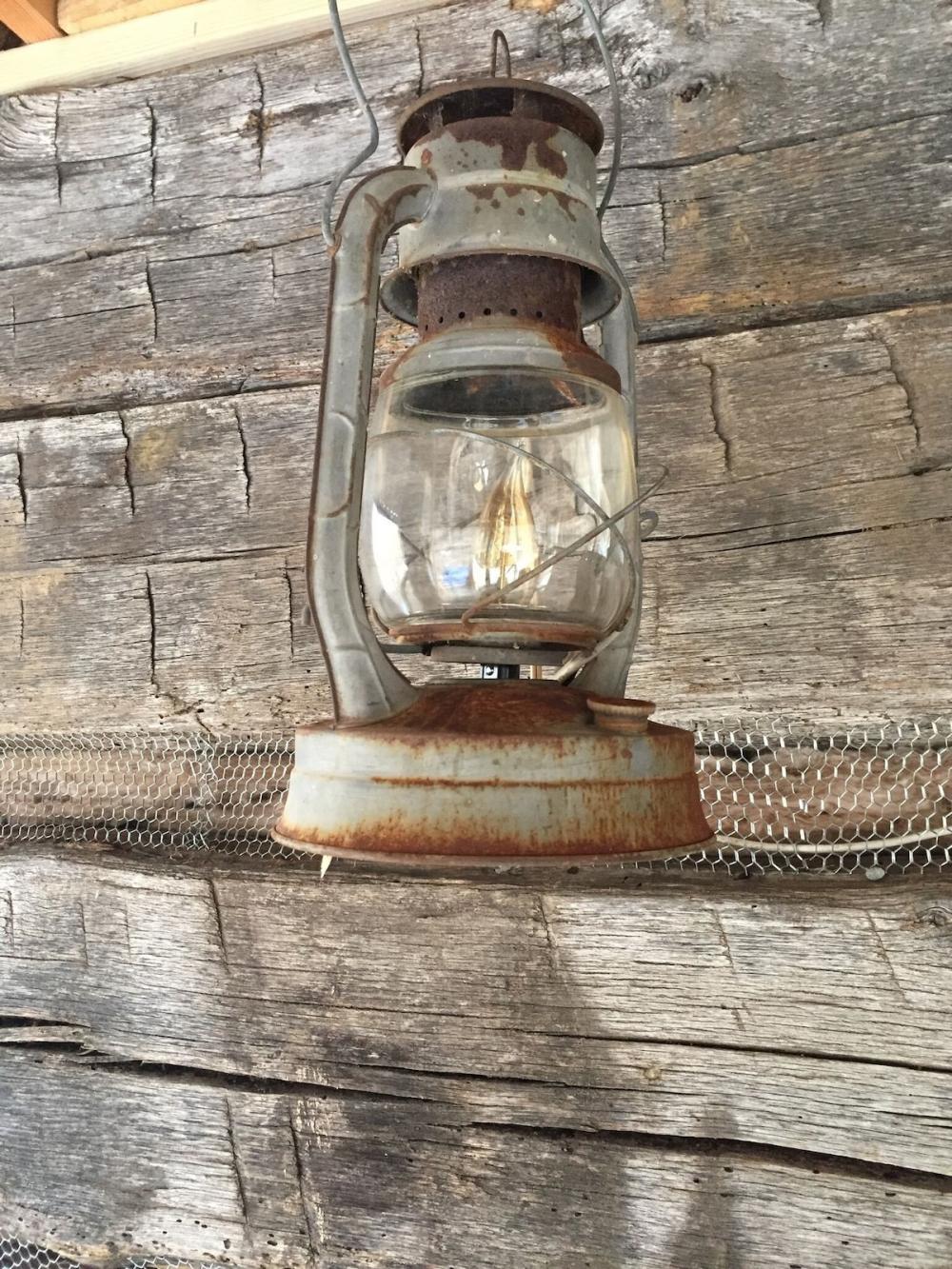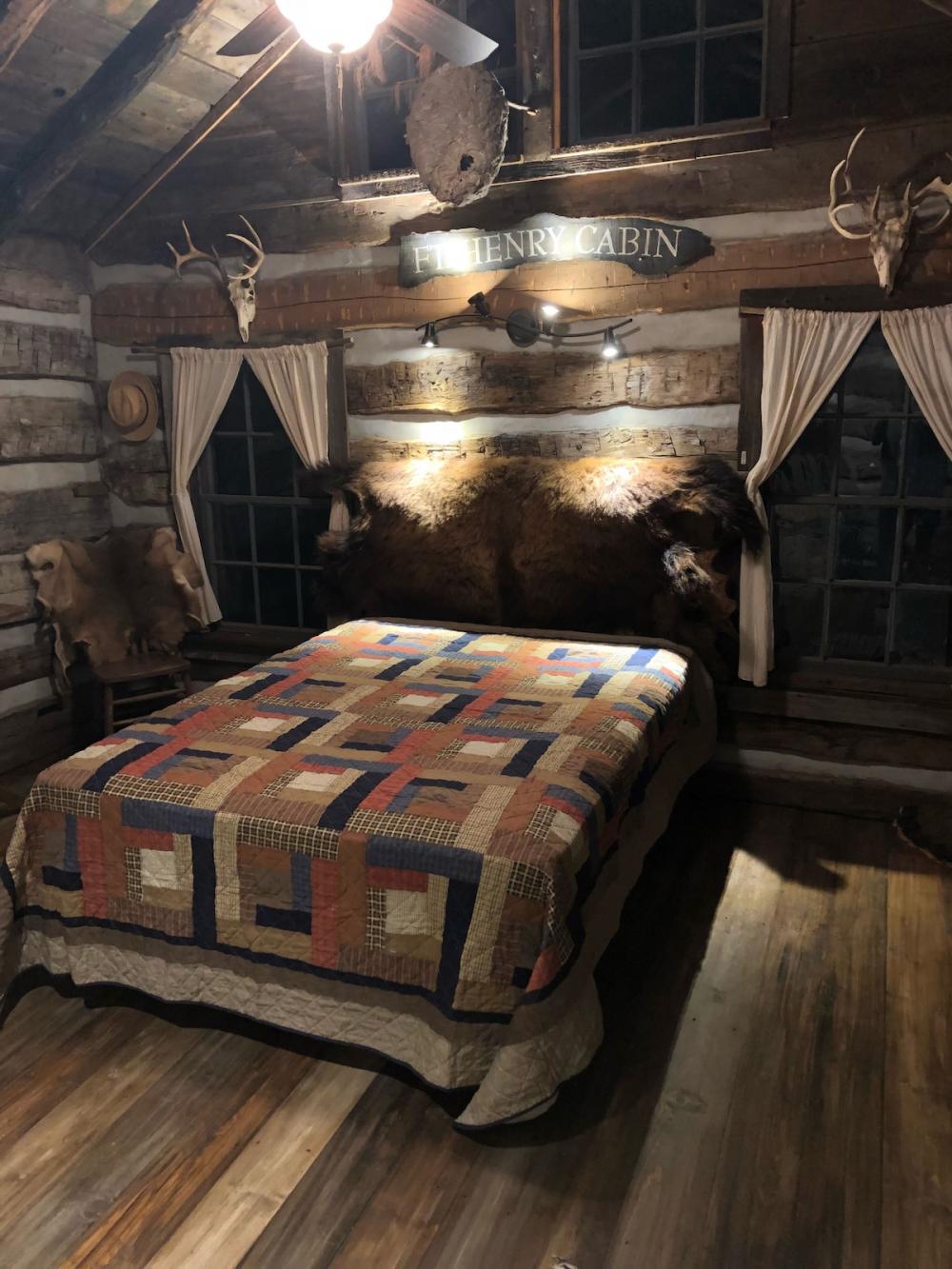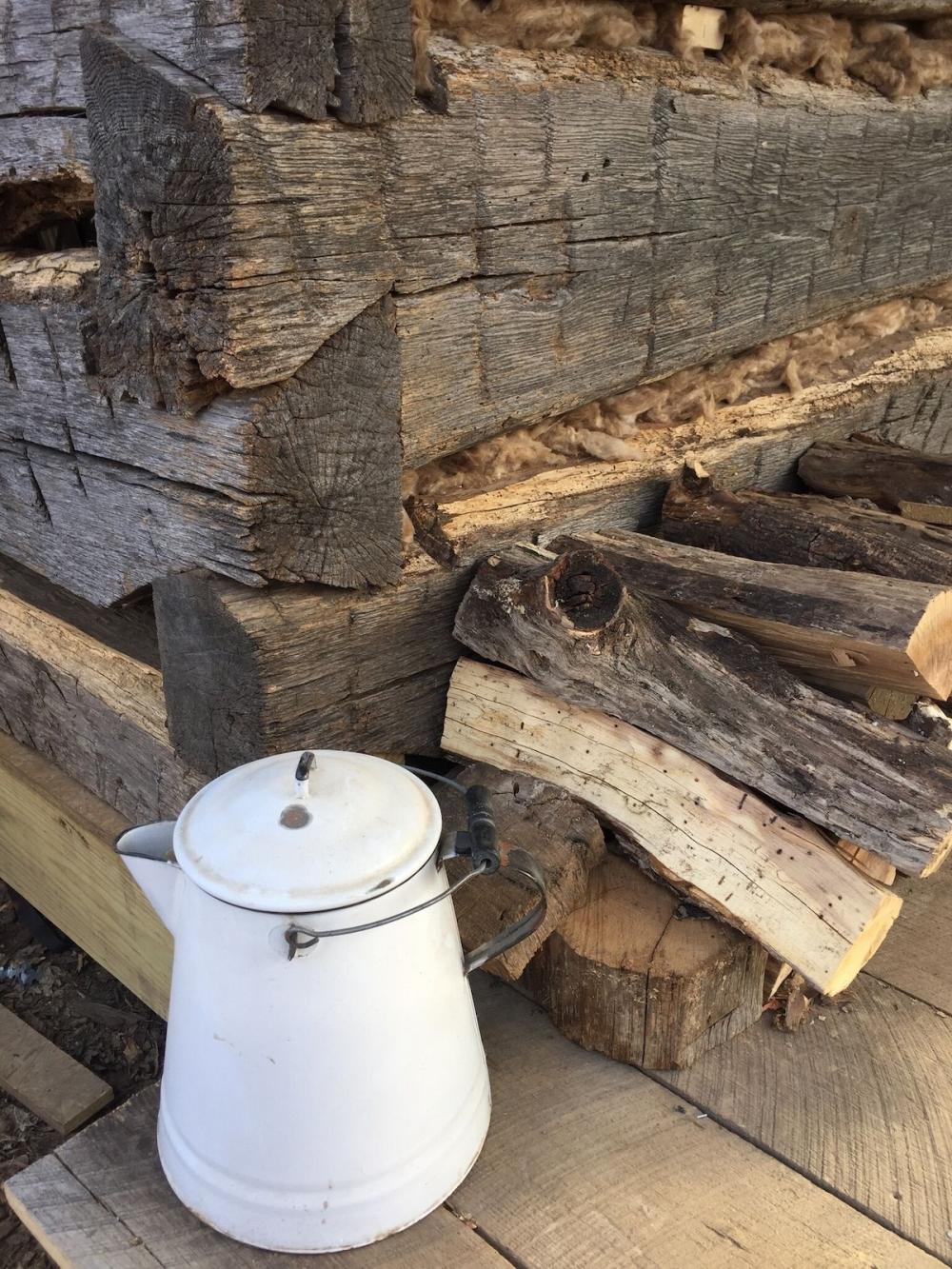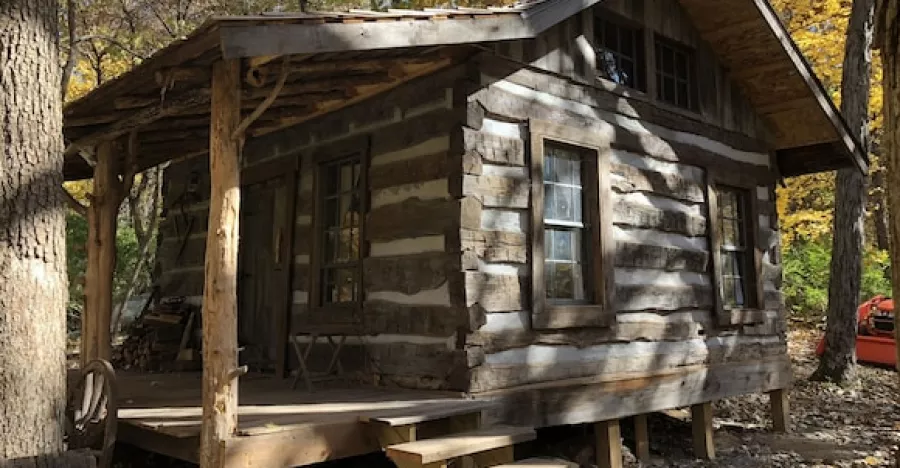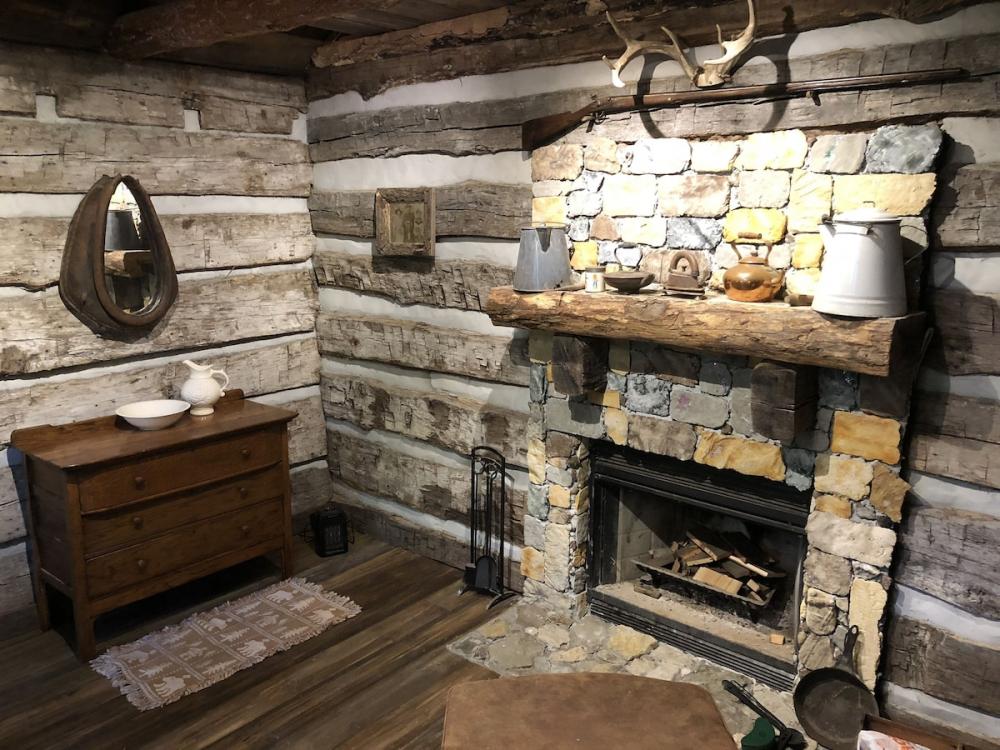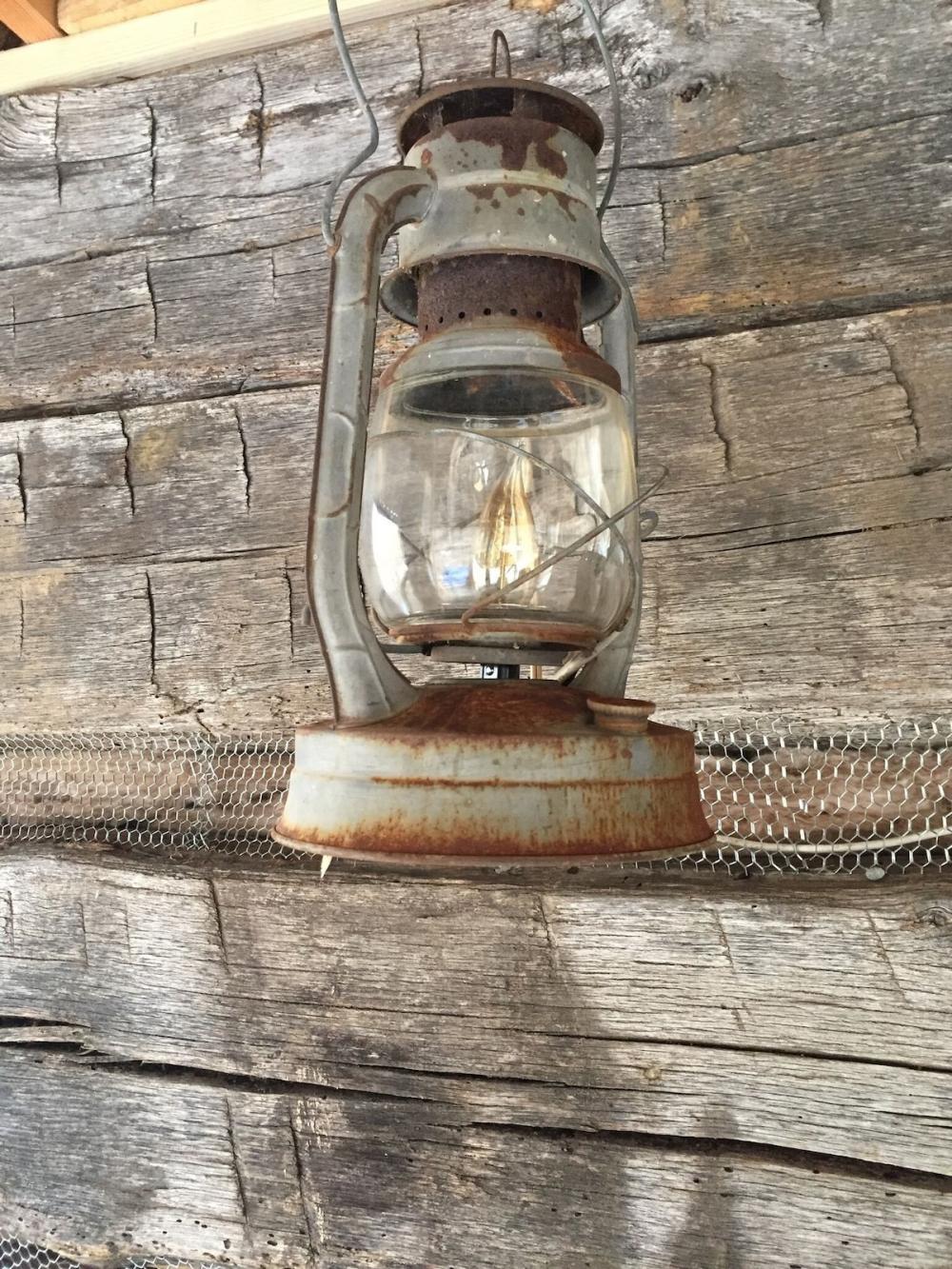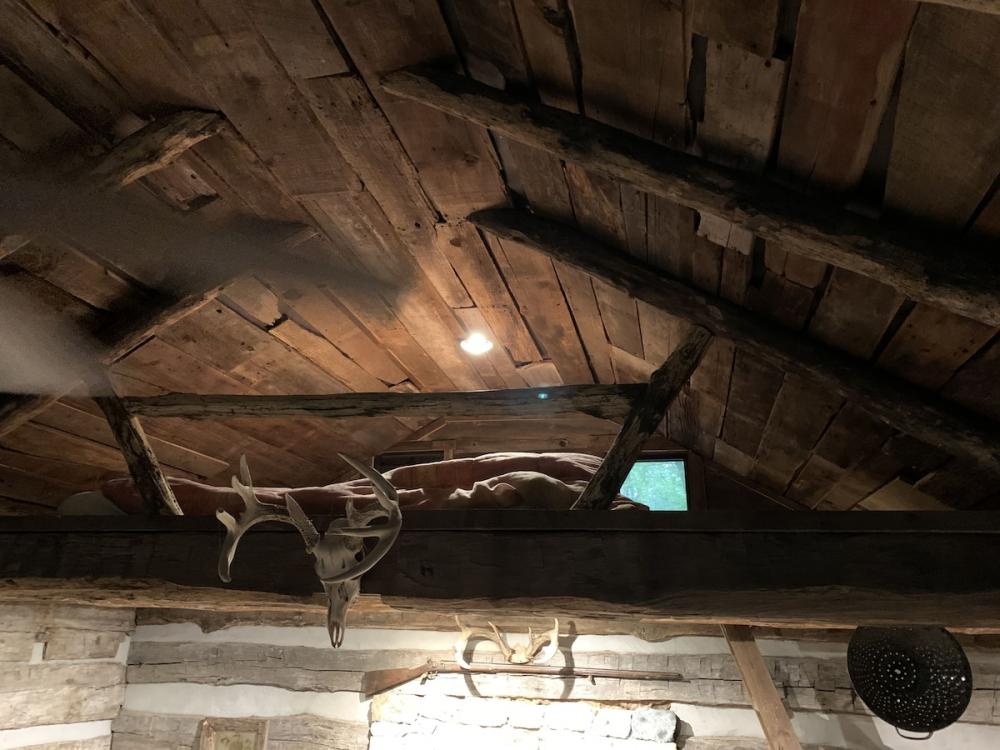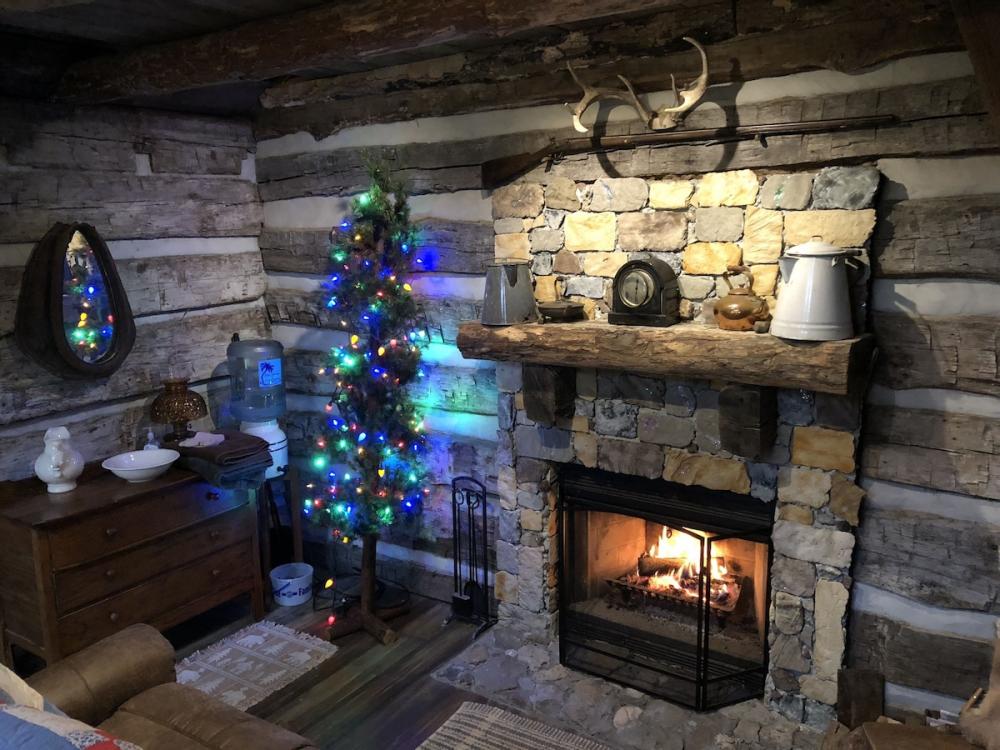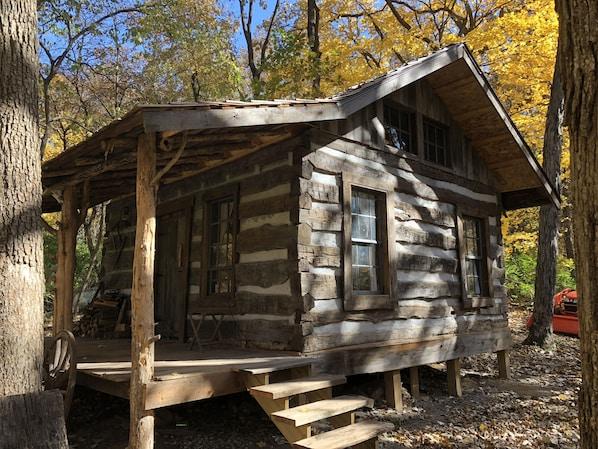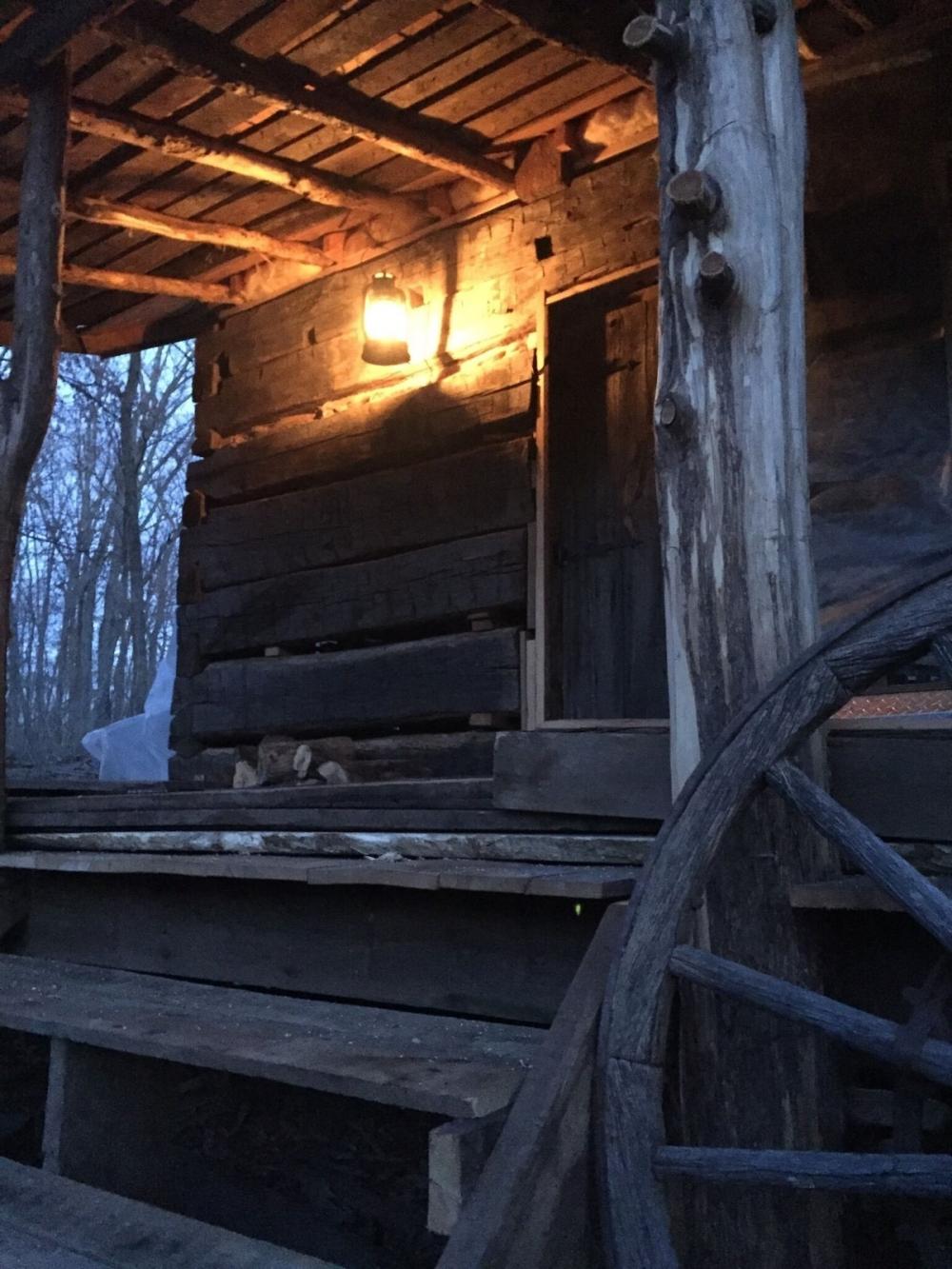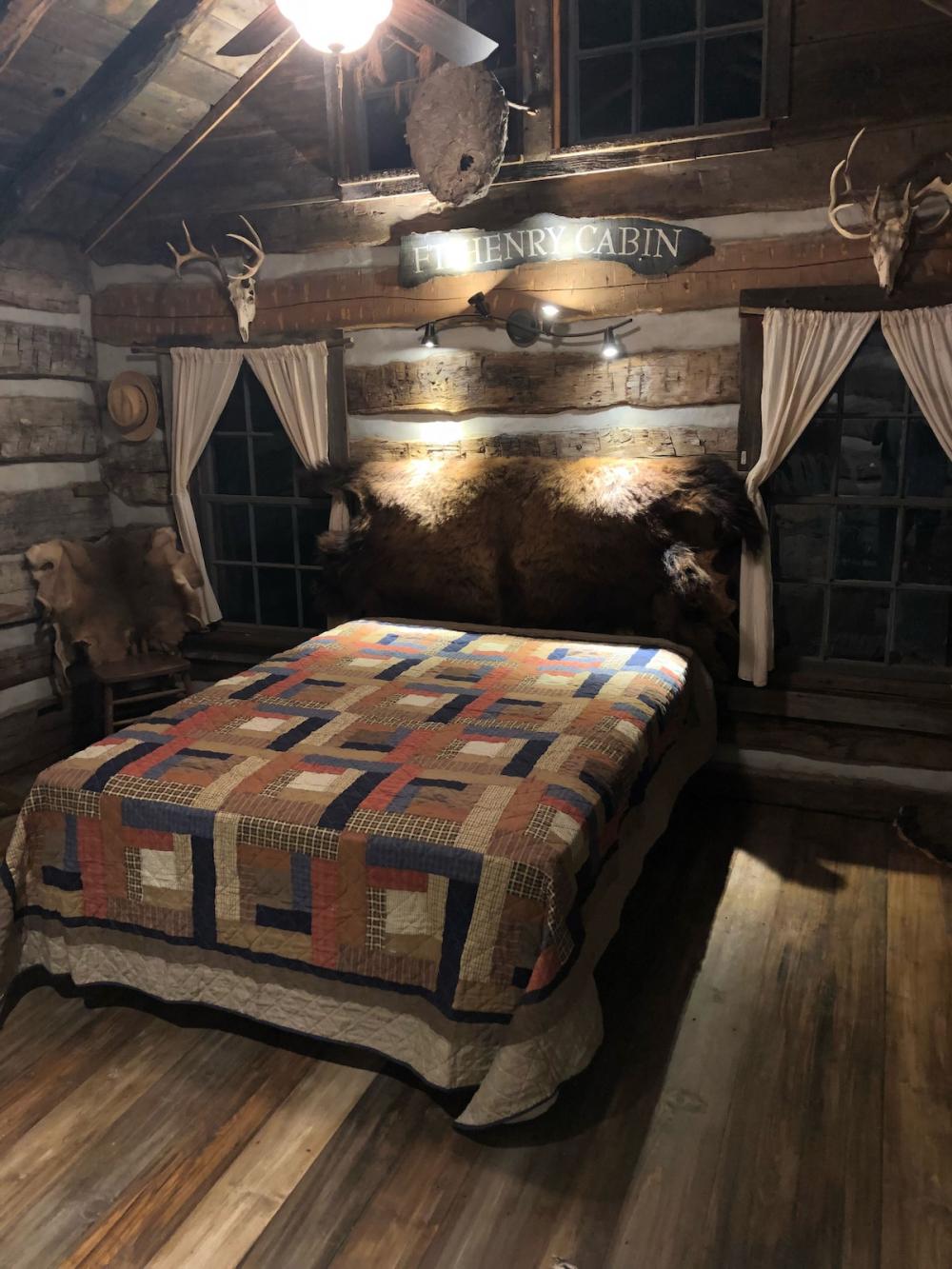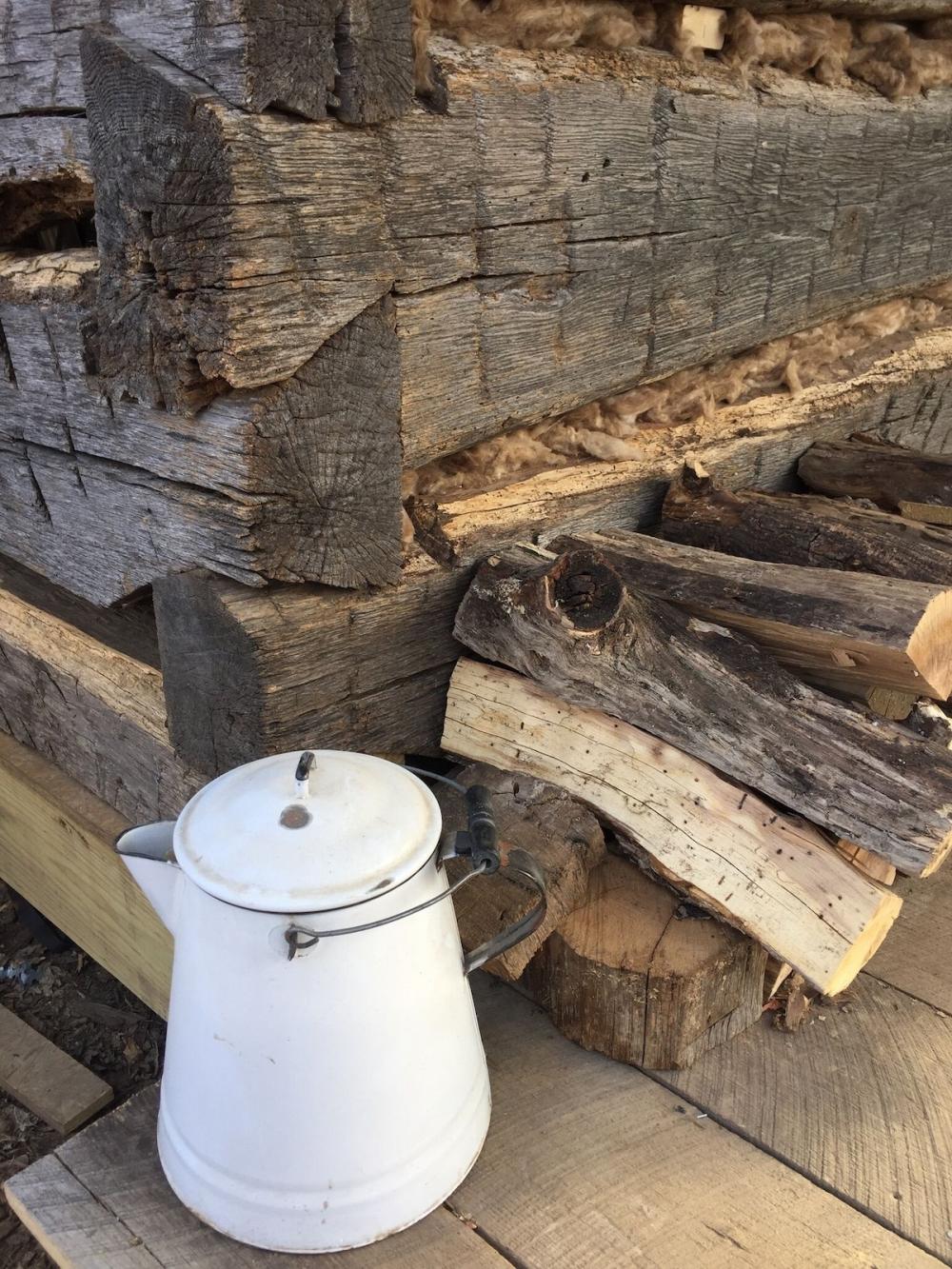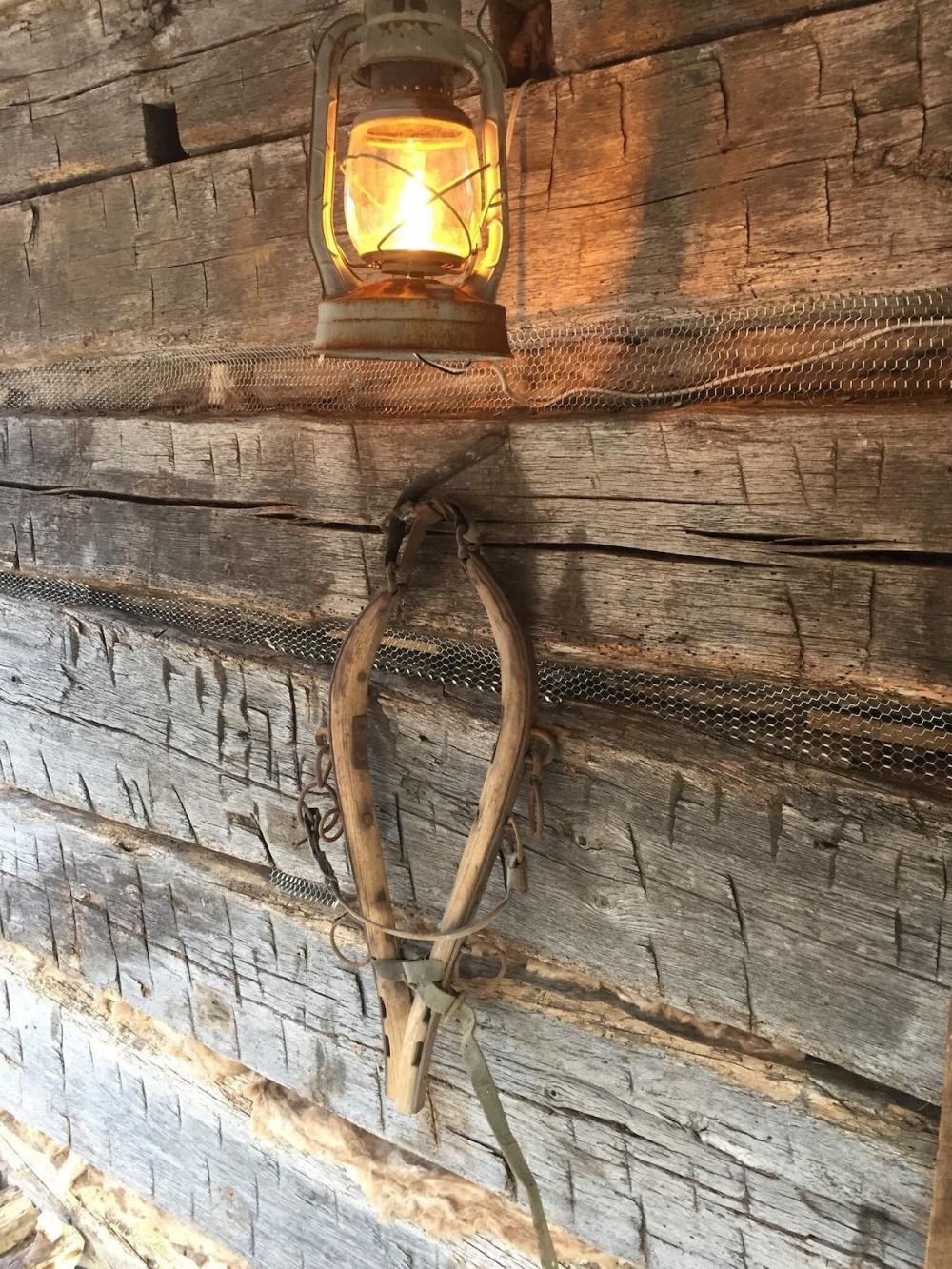Take a look around the Ten Acre Treehouse, a Fort Henry Log Cabin that sleeps 2 to 4 people. You’ll feel like a 𝘤𝘩𝘪𝘭𝘥 again in this treehouse cabin in Nauvoo, Illinois with a fireplace. You can stay in a legitimate piece of American history in this Fort Henry log cabin which is a nearly 200-year-old White Oak log cabin originally erected at the trapper’s outpost of Fort Henry, Missouri about 1830. The town of Fort Henry, named after Dr. Henry Fort, was an active community circa 1817-1853. This is a one-room log cabin featuring a wood-burning fireplace, with small sitting area, a queen-sized bed, with a sleeping loft with a queen-sized mattress. The treehouse cabin has a refrigerator, microwave, coffee maker, and gas grill. There is a composting toilet outhouse, and outdoor heated shower, to complete the pioneer log cabin experience. The running water is usually turned off during the winter months between December to March but bottled water is provided for washing up, brushing teeth, etc. Pets are welcome at the treehouse cabin building for an additional fee.
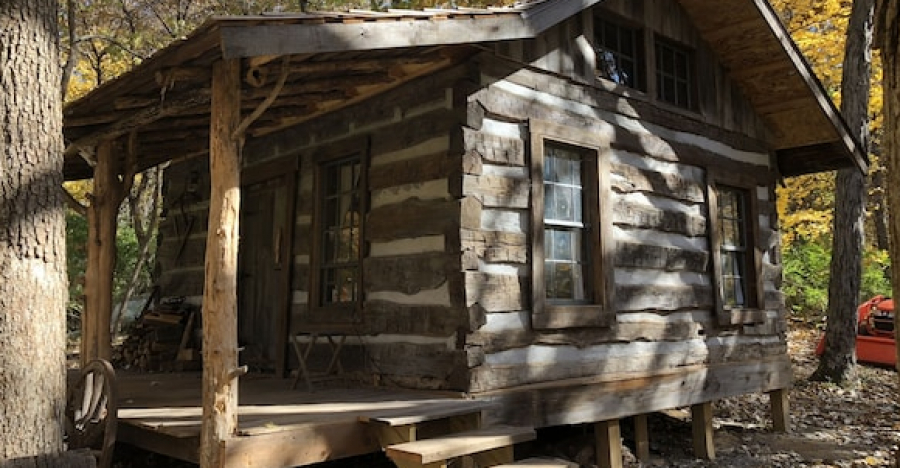
Staying in a treehouse cabin is a unique vacation idea that is sure to offer up some 𝘤𝘩𝘪𝘭𝘥hood nostalgia. The following are just some of the things to consider when building a treehouse cabin on your property. To start you want to find a location to build your treehouse. The first step in building your treehouse cabin is finding a sturdy tree that can handle the treehouse construction. Ideally, you want a hardwood that is old enough so the branches are eight or more inches in diameter. If you only have softwood trees, the branches will need to be bigger to ensure that they can handle the load. Ideal species of trees include hemlock, beech, maple, oak, and fir.
Consider both weight and stability. Your treehouse cabin platform should be as close to the tree trunk as possible, as you don’t want the kids falling out of the treehouse. Also, make sure the treehouse cabin platform is adequately braced. Ideally, you should add diagonal bracing to account for any uneven loads. Center the Treehouse Over the Base of the Tree. If you put the treehouse only on one side, it won’t be stable. If you live in a location with high winds, keep the treehouse to the lower third of the tree to prevent uprooting in a storm. If you are building on one trunk, do your best to keep the main platform level.
Don’t Restrict Tree Growth. Leave some gaps around the tree to allow for growth, especially around branches and trunks that come into the treehouse. A good rule is two inches if the tree passes through the floor, and three inches if it passes through the roof. Avoid using anything that constricts the branches such as rope, straps, and wire or you risk strangling the tree. Include spacers between the beams and the tree to account for movement. Consider extra-long large bolts. This gives you the freedom to mount items on the ends while also giving the tree enough room to grow.
